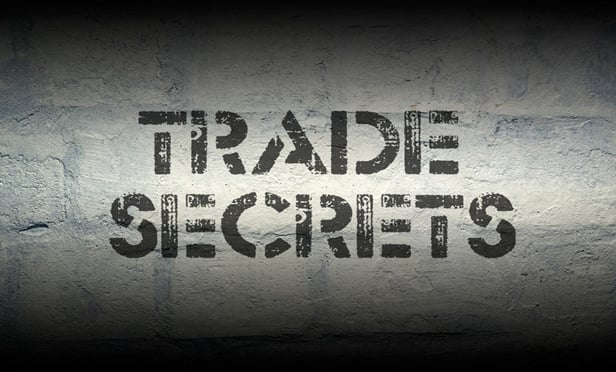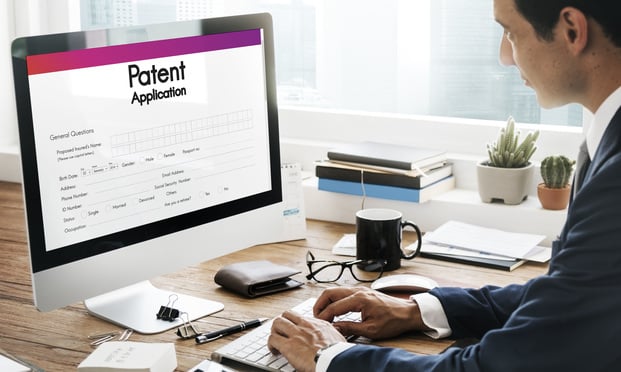Features

The Complexities of the TAKE IT DOWN Act
The TAKE IT DOWN Act is the first federal legislation to address both unadulterated non-consensual intimate imagery and digital forgeries, marking a significant milestone in U.S. content regulation.
Features

Trends In Patent Policy and Enforcement
The patent world is at a moment of change. A tremendous amount of thought, financial investment, and political capital is being devoted to transforming patents into assets that are central to the economy, international trade, and national defense. The incentives for obtaining and aggressively monetizing patents are increasing. In contrast, defending a patent litigation is becoming more difficult and the stakes are higher. Companies that take steps now to navigate these changes may be rewarded with significant competitive advantages.
Features

The Curious Persistence of the Six-Factor Trade Secret Test
This two-part article discusses the proof required for information to be considered a trade secret under U.S. statutory law, and includes detailed insight into the six-factor test outlined in the Restatement of Torts. Part One includes the evolving tests for determining a trade secret.
Features

D.C. Circuit Court Rules That Artificial Intelligence Cannot Solely Author Copyrightable Works
The D.C. Circuit affirmed that AI cannot be the sole author on a copyright-registered work, but left questions about the future of AI authorship in copyright for Congress to resolve.
Features

From DeepSeek to Distillation: Protecting IP In the AI World
Protection against unauthorized model distillation is an emerging issue within the longstanding theme of safeguarding IP. Existing countermeasures have primarily focused on technical solutions. This article will examine the legal protections available under the current legal framework and explore why patents may serve as a crucial safeguard against unauthorized distillation.
Features

Eliminating Judicial Exceptions: The Promise of the Patent Eligibility Restoration Act
The Patent Eligibility Restoration Act (PERA) proposes a solution to a complex debate: What can be patented, and when do nature and thoughts become property? This article provides an overview of the PERA bill, examines the current issues with Section 101 of the Patent Act, the specific proposals of PERA, and the existing pros and cons of the bill.
Features

Exploring Generative AI’s Impact on Intellectual Property
This article highlights some of the challenges GenAI presents, and recent developments in copyright law and trademark law in this quickly evolving space.
Features

Life, Liberty, and the Pursuit of Customers: Developments on ‘Conquesting’ from the Ninth Circuit
In a recent decision, the U.S. Court of Appeals for the Ninth Circuit addressed the issue of whether purchasing market competitors’ search engine keyword terms, known as “conquesting,” constitutes trademark infringement.
Features

Pleading Importation: ITC Decisions Highlight Need for Adequate Evidentiary Support
The International Trade Commission is empowered to block the importation into the United States of products that infringe U.S. intellectual property rights, In the past, the ITC generally instituted investigations without questioning the importation allegations in the complaint, however in several recent cases, the ITC declined to institute an investigation as to certain proposed respondents due to inadequate pleading of importation.
Features

Ex Parte Trademark Appeals to District Court — Lessons Learned from the Front Lines
Although pursuit of an appeal to the Federal Circuit may under some circumstances prove to be quicker and less expensive, appeals to district courts are becoming increasingly attractive given recent changes in the law and USPTO practice in defending these actions.
Need Help?
- Prefer an IP authenticated environment? Request a transition or call 800-756-8993.
- Need other assistance? email Customer Service or call 1-877-256-2472.
MOST POPULAR STORIES
- Second Circuit Reinforces Bankruptcy Code Settlement Payment Safe HarborThe Second Circuit affirmed the lower courts' judgment that a "transfer made … in connection with a securities contract … by a qualifying financial institution" was entitled "to the protection of ... §546 (e)'s safe harbor ...."Read More ›
- The DOJ's New Parameters for Evaluating Corporate Compliance ProgramsThe parameters set forth in the DOJ's memorandum have implications not only for the government's evaluation of compliance programs in the context of criminal charging decisions, but also for how defense counsel structure their conference-room advocacy seeking declinations or lesser sanctions in both criminal and civil investigations.Read More ›
- The DOJ's Corporate Enforcement Policy: One Year LaterThe DOJ's Criminal Division issued three declinations since the issuance of the revised CEP a year ago. Review of these cases gives insight into DOJ's implementation of the new policy in practice.Read More ›
- Use of Deferred Prosecution Agreements In White Collar InvestigationsThis article discusses the practical and policy reasons for the use of DPAs and NPAs in white-collar criminal investigations, and considers the NDAA's new reporting provision and its relationship with other efforts to enhance transparency in DOJ decision-making.Read More ›
- Questions Every Law Firm Business Development Leader Should Be AskingIn a legal marketplace transformed by technology, heightened client expectations, and fierce competition, law firm leaders must approach strategy with rigor and clarity. The following questions, accompanied by relevant statistics and explanations, offer a focused guide for uncovering opportunity and driving sustainable growth.Read More ›
